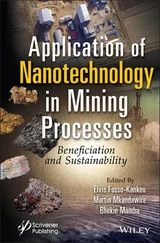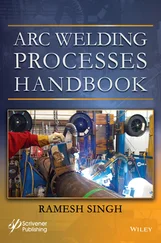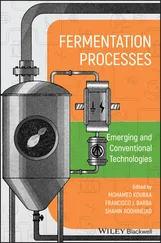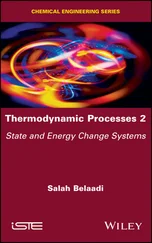Isotopic Constraints on Earth System Processes
Здесь есть возможность читать онлайн «Isotopic Constraints on Earth System Processes» — ознакомительный отрывок электронной книги совершенно бесплатно, а после прочтения отрывка купить полную версию. В некоторых случаях можно слушать аудио, скачать через торрент в формате fb2 и присутствует краткое содержание. Жанр: unrecognised, на английском языке. Описание произведения, (предисловие) а так же отзывы посетителей доступны на портале библиотеки ЛибКат.
- Название:Isotopic Constraints on Earth System Processes
- Автор:
- Жанр:
- Год:неизвестен
- ISBN:нет данных
- Рейтинг книги:4 / 5. Голосов: 1
-
Избранное:Добавить в избранное
- Отзывы:
-
Ваша оценка:
- 80
- 1
- 2
- 3
- 4
- 5
Isotopic Constraints on Earth System Processes: краткое содержание, описание и аннотация
Предлагаем к чтению аннотацию, описание, краткое содержание или предисловие (зависит от того, что написал сам автор книги «Isotopic Constraints on Earth System Processes»). Если вы не нашли необходимую информацию о книге — напишите в комментариях, мы постараемся отыскать её.
Volume highlights include: Isotopic Constraints on Earth System Processes
The American Geophysical Union promotes discovery in Earth and space science for the benefit of humanity. Its publications disseminate scientific knowledge and provide resources for researchers, students, and professionals.
Isotopic Constraints on Earth System Processes — читать онлайн ознакомительный отрывок
Ниже представлен текст книги, разбитый по страницам. Система сохранения места последней прочитанной страницы, позволяет с удобством читать онлайн бесплатно книгу «Isotopic Constraints on Earth System Processes», без необходимости каждый раз заново искать на чём Вы остановились. Поставьте закладку, и сможете в любой момент перейти на страницу, на которой закончили чтение.
Интервал:
Закладка:
3.2. ANALYTICAL METHODS AND SAMPLES
3.2.1. Double‐spike Thermal Ionization Mass Spectrometry Calcium Isotope Measurements
The approach and analytical methods employed in this work are identical to those described in Simon and DePaolo (2010) and analyses were made during the same period as this earlier study. Briefly, bulk rock powders (~25 mg) were dissolved in a mixture of mineral acids and combined with a 42Ca‐ 48Ca spike prior to chemical separation. Calcium was purified on cation exchange columns (AG‐50 W‐X8). A 43Ca single spike was used to determined column blanks and yields, which were ~10–15 ng and ~99.5%, respectively. About 3 μg of purified calcium was loaded in dilute HNO 3onto rhenium filaments with dilute H 3PO 4for each mass spectrometric analysis. Calcium isotope ratios were measured with a Thermo‐Finnigan Triton thermal ionization multi‐collector mass spectrometer (TIMS) at the University of California in the Center for Isotope Geochemistry ( Table 3.1). The 39K, 40Ca, 42Ca, 43Ca, 44Ca, 48Ca, and 49Ti ion beams were measured in a multi‐step static cup configuration. The magnitude of mass interference from 40K and 48Ti was monitored and found to be insignificant; no corrections for 40K and 48Ti were applied. The 42Ca‐ 48Ca double spike method, e.g., Russell et al. (1978), was employed to correct for instrumental mass‐fractionation. The tracer 42Ca/ 48Ca ratio of 0.8364±29 used in this study was determined by isotopic measurements of tracer–standard mixtures, and by assuming that the 42Ca/ 44Ca ratio of the calcium standard is 0.31221, the value obtained by Marshall and DePaolo (1982) and Russell et al. (1978). Due to the higher abundances of 40Ca (96.94%) and 44Ca (2.09%) stable calcium isotope variations are commonly reported as δ 44Ca = ( 44Ca/ 40Ca) sample/( 44Ca/ 40Ca) standard– 1)·1000, where it is important to note that the most abundant isotope, 40Ca, can also be produced by the radioactive decay of 40K (half‐life of ~1.25 Ga). This is typically not a concern for young mafic rocks, but in old rocks, stable calcium isotope variations (δ 44Ca) must be corrected for potential radiogenic ingrowth of 40Ca.
Table 3.1 Mass‐dependent calcium isotope compositions of igneous rocks and standards.
| SampleBSE | Age (Ma) | 44Ca/ 40Ca | 2σ | 43Ca/ 40Ca | 2σ | n | Source |
|---|---|---|---|---|---|---|---|
| Peridotite (avg)Peridotite (avg) Komatiite (avg) | 0.010.00–0.02 | 0.040.050.16 | –0.05–– | 0.07–– | 2147 | Simon and DePaolo (2010)Kang et al. (2017) Amsellem et al. (2019) | |
| Basalts | |||||||
| BCR‐1 | 15 | –0.08 | 0.04 | –0.05 | 0.07 | 2 | Simon and DePaolo (2010) |
| BCR‐2 | 15 | –0.09 | 0.06 | 1 | Simon et al. (2017) | ||
| OIB (avg) | 1 | 0.00 | 0.04 | – | – | 7 | Huang et al. (2010) |
| Koolau OIB (avg) | 1 | –0.15 | 0.06 | – | – | 6 | Huang et al. (2011) |
| Mahukona OIB (avg) | 1 | –0.02 | 0.19 | – | – | 2 | Huang et al. (2011) |
| Manua Kea OIB (avg) | 1 | –0.02 | 0.02 | – | – | 2 | Huang et al. (2011) |
| BHVO‐1 OIB | 1 | 0.01 | 0.05 | – | – | 1 | Huang et al. (2011) |
| BHVO‐2 OIB | 1 | –0.05 | 0.05 | – | – | 1 | Bermingham et al. (2018) |
| average | –0.05 | 0.02 | |||||
| Arc Lavas | |||||||
| AT‐50 | –0.08 | 0.14 | –0.01 | 0.10 | 1 | ||
| YO1 | –0.16 | 0.14 | –0.18 | 0.11 | 1 | ||
| TE1 | –0.12 | 0.14 | –0.15 | 0.10 | 1 | ||
| SC2 | 0.06 | 0.05 | 0.07 | 0.05 | 4 | Simon and DePaolo (2010) | |
| average | –0.07 | 0.05 | –0.07 | 0.06 | |||
| Carbonatites | |||||||
| Laacher See 129OL lava 2007OL lava 4‐7‐08 | 0.0129000.0000130.000011 | –0.39–0.130.05 | 0.140.130.14 | –0.27–0.060.06 | 0.250.100.10 | 121 | |
| Standards | |||||||
| SRM915aSeawater (IAPSO) Seawater (GeoB 9506‐4) | –0.950.810.94 | 0.040.160.04 | –0.77–– | 0.06–– | 111 | this study Simon et al. (2017)Bermingham et al. (2018) |
Note: All reported where difference between BSE to SRM915a is 0.95 (Antonelli and Simon, 2020), cf. Simon and DePaolo (2010) saw an intrinsic effect in SRM915a, which leads to ~0.1 per mil increase in measured values reported relative to SRM915a (see text).
More than four different reference materials are currently used to define δ 44Ca (see inter‐conversions in Antonelli & Simon, 2020). These are igneous samples that represent BSE, e.g., unmetamorphosed peridotites, komatiites, and basaltic rocks from Earth and other terrestrial planets, carbonate standard SRM915a, synthetic carbonate standard SRM915b, and modern seawater. In this study, reported values assume BSE = 0.0‰ (reported as deviations from 44Ca/ 40Ca = 0.0212094 ± 3 and 43Ca/ 40Ca = 726.840 ± 45; see Simon & DePaolo, 2010). This follows the approach of DePaolo (2004). When multiple measurements were made, the values listed in Table 3.1are weighted means with uncertainties of two standard errors in the mean and are corrected for age and/or intrinsic 44Ca/ 40Ca ratio based on measurements reported by Simon et al. (2009). The reported uncertainties are typically less than the 2SD long‐term reproducibility of the SRM915a standard, which is ± 0.14 and ± 0.20‰ for δ 44Ca and δ 43Ca, respectively. Based on my experience, this is the current resolution of the technique and, therefore, I focus on δ 44Ca differences that are greater than ~0.15‰. When only an individual measurement is reported, I assign the 2SD reproducibility of the SRM915a standard.
Measured values of SRM915a were δ 44Ca = −0.97‰ and δ 43Ca = −0.77‰. Correcting for their intrinsic 44Ca/ 40Ca ratio that is slightly higher than most planetary materials (see Mills et al., 2018; Simon et al., 2009), shifts the values to δ 44Ca = −0.88‰ and δ 43Ca= −0.68‰. All data in Table 3.1and the electronic supplement are reported corrected to the value of SRM915a (δ 44Ca = –0.95‰) as recommended by Antonelli and Simon (2020). For reference, the measured difference between the average of repeat analyses of the well‐known SRM915a standard and estimates of the BSE for this work (Δ 44Ca BSE‐RM915a= 0.97 ± 0.07‰, 2σ, n = 11) is similar to the difference found elsewhere, e.g., Table 3.2.
3.2.2. Igneous Samples Characterized for Calcium Isotope Composition
Four Central American arc basalts were selected for this study. The recent volcanism along the Central American volcanic arc results from subduction of the Cocos Plate beneath the Caribbean Plate ( Fig. 3.1) and consists of two regions of magmatism, the volcanic front and back‐arc volcanism (Carr et al., 1990). Three of the studied arc samples come from the volcanic front and one is from a back‐arc volcano. From north to south the samples include: Atitlan volcano, Guatemala (AT‐50), back‐arc Yohoa volcano, Honduras (YO1), San Cristobal volcano, Nicaragua (SC2), and Telica volcano, Nicaragua (TE1). Trace elements ratios (e.g., Ba/La, Ba/Th, Sr/Nb, U/Th) measured in bulk samples and in olivine‐bearing melt inclusions for these samples exhibit a significant amount of the geochemical variation seen both locally and regionally along the volcanic arc that is thought to reflect the influence of subducted sediments ( Fig. 3.2; Patino et al., 2000; Sadofsky et al. 2008). Characterization of sedimentary core sampled off the coast at Deep Sea Drilling Program Site 495 indicates early carbonate deposition followed by later hemipelagic deposition involving large differences in incompatible elements and element ratios (e.g., Ba/Th). These differences can be used to identify sediment contribution and even possibly to distinguish between carbonate deposition and hemipelagic deposition (see Fig. 3.2). In particular, the carbonate sediments are believed to provide a distinctive geochemical signature that has been used to track the flux of sedimentary addition to the arc magmas (Patino et al., 2000). Bulk powders of the samples were obtained from M. Carr. Their major, trace element, and isotopic compositions have been reported by Bolge et al. (2009), Carr et al. (1990), Feigenson (1986), Leeman et al. (1994), and Patino et al. (1997; 2000), see electronic supplement.
Читать дальшеИнтервал:
Закладка:
Похожие книги на «Isotopic Constraints on Earth System Processes»
Представляем Вашему вниманию похожие книги на «Isotopic Constraints on Earth System Processes» списком для выбора. Мы отобрали схожую по названию и смыслу литературу в надежде предоставить читателям больше вариантов отыскать новые, интересные, ещё непрочитанные произведения.
Обсуждение, отзывы о книге «Isotopic Constraints on Earth System Processes» и просто собственные мнения читателей. Оставьте ваши комментарии, напишите, что Вы думаете о произведении, его смысле или главных героях. Укажите что конкретно понравилось, а что нет, и почему Вы так считаете.












